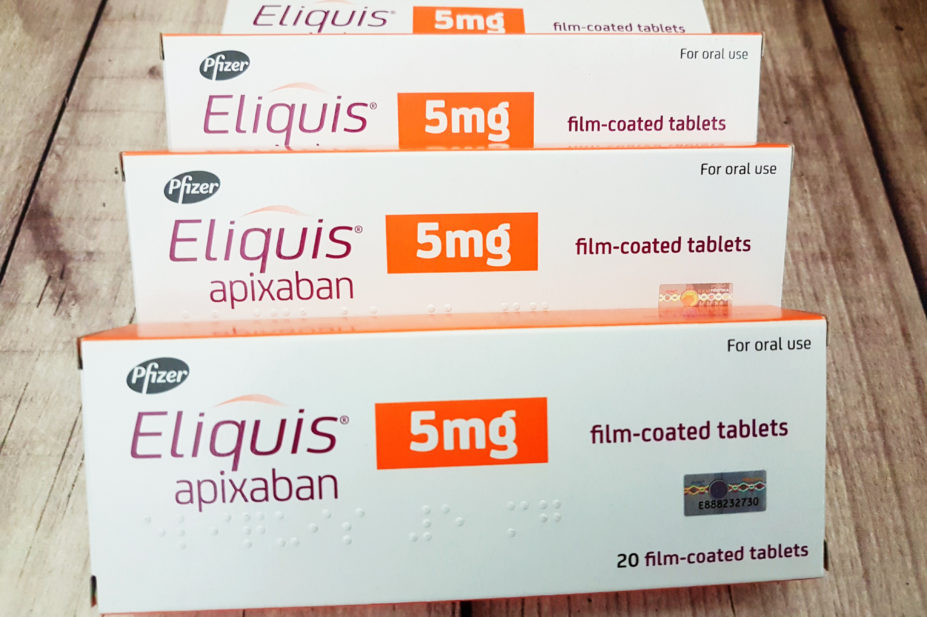
Shutterstock.com
Four direct oral anticoagulants (DOACs) are all recommended as options for people with atrial fibrillation (AF) and a CHA2DS2‑VASc score of 2 or above for the prevention of stroke, new guidance from the National Institute for Health and Care Excellence (NICE) has said.
The final guideline, which was published on 27 April 2021, has been welcomed by the charity Thrombosis UK, who had raised significant concerns when the draft guideline was published at the end of 2020.
The draft guidelines proposed recommending that patients with AF and a CHA2DS2‑VASc score of 2 take the DOACs apixaban or dabigatran twice per day, and that edoxaban or rivaroxaban, which are taken once per day, should only be offered if apixaban and dabigatran are not tolerated.
At the time, Beverley Hunt, medical director of Thrombosis UK, said it was “difficult to understand” why the draft guidance was suggesting taking away DOAC options that offered a once-per-day dose.
She also pointed out that the recommendation was “completely out of sync” with NHS England guidance published in April 2020, which recommended considering all DOACs for the prevention of AF-related stroke.
Commenting on the final guideline, Matthew Fay, a GP and Thrombosis UK trustee, said that the charity was “pleased” to see the changes brought about by NICE from the original draft guideline that would have “restricted the range of oral anticoagulants in common usage”.
“We are very conscious that the majority of people who require long-term oral anticoagulants suffer from atrial fibrillation, and this is where clinicians in both primary and secondary care gain their experience,” he said.
“We had concern that restricting the access from the full range of oral anticoagulants that have previously been approved by NICE would have an unintentional consequence on those people requiring anticoagulation for VTE- [venous thromboembolism] related issues, in that most clinicians would have a limited exposure to all the possible anticoagulants available.”
“We are pleased to see that not only people with VTE-related event will now, once again, have the opportunity to choose from the full range of NICE-approved oral anticoagulants, so that they can make informed decisions about interventions to suit their personal needs best.”
In the rationale for the final guideline, NICE said that, based on the evidence and experience of the guideline committee, it had decided not to recommend one DOAC over the others, but instead to emphasise that treatment should be tailored to the person’s clinical needs and preferences.
“Each anticoagulant has different risks and benefits that should be considered and fully discussed with the person as part of informed shared decision making,” the guideline states.
“The committee highlighted that the choice might be affected by factors such as renal impairment and swallowing difficulties, and that healthcare professionals should refer to the BNF [British National Formulary] for advice on contraindications and cautions.
“They also stressed the importance of adherence and factors that might affect this, such as dosing frequency, when making the decision.”
The new NICE guideline on management of AF replaces guidance published in June 2014, which advised that anticoagulation “may be with apixaban, dabigatran etexilate, rivaroxaban or a vitamin K antagonist”.
You may also be interested in

New class of anticoagulant found to ‘overwhelmingly’ reduce bleeding events in patients with atrial fibrillation

Nearly 92% of atrial fibrillation patients in England anticoagulated, says NHS adviser
